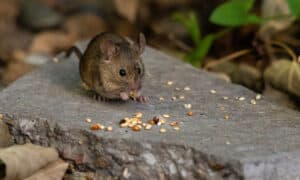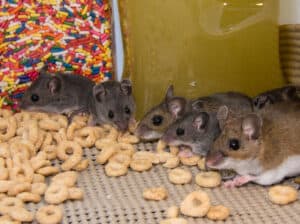Squirrels are small mammals best known for their bushy tails and mischievous nature. They are widespread across Africa, Australia, Eurasia, and the Americas, where they are found in virtually every habitat – including forests and deserts. There are more than 200 species of squirrels in the world, and as they are everywhere, one of the most frequently asked questions about them is “are squirrels rodents.”
In this article, we’ll learn what defines a rodent and find out whether squirrels fit into that category. We’ll discover how squirrels are so well adapted to their lifestyle, such as using their tail to regulate their body temperature. We’ll also find out about the different types of squirrels, including ones that can fly. So join us as we discover whether squirrels are rodents or not.
About Squirrels
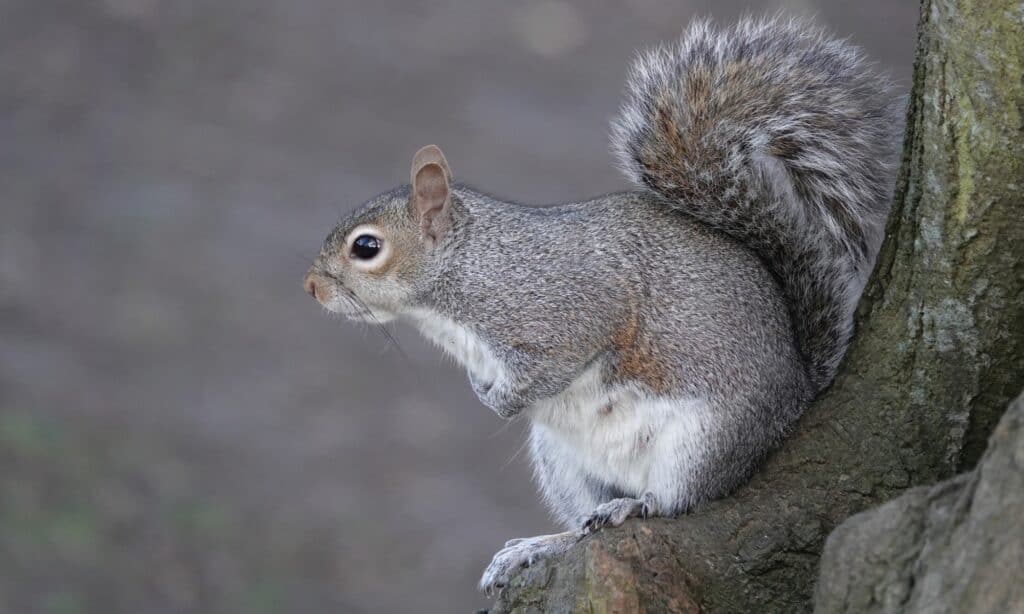
Squirrels are very active mammals.
©iStock.com/Nigel Harris
Squirrels are mammals from the family group Sciuridae. This includes tree squirrels, ground squirrels, flying squirrels, chipmunks, marmots, and prairie dogs. Although it’s easy to assume that flying squirrels can fly, given their name, they are not actually capable of true flight. Instead, they glide with the help of a patagium which is a flap of skin between their wrist and ankle. However, the most recognizable squirrels are tree squirrels. The smallest squirrels are pygmy squirrels that are only around 4 inches long, while some flying squirrels are amongst the largest, at more than 4 feet long.
Squirrels are some of the most active and unique mammals around, and tree squirrels, in particular, are often seen scurrying up and down trees. In fact, their ability to descend trees headfirst is fascinating. They do this by rotating their hind feet at the ankle to point backward. This allows them to grip the tree much better while descending safely.
Squirrels give typically give birth once or twice a year. The gestation period is between three and six weeks, and the number of young per litter varies between species. Squirrels are born hairless, toothless, blind, and completely dependent on their mothers for the first few weeks of their lives. Despite this, they are fully weaned by ten weeks old.
Are Squirrels Rodents?
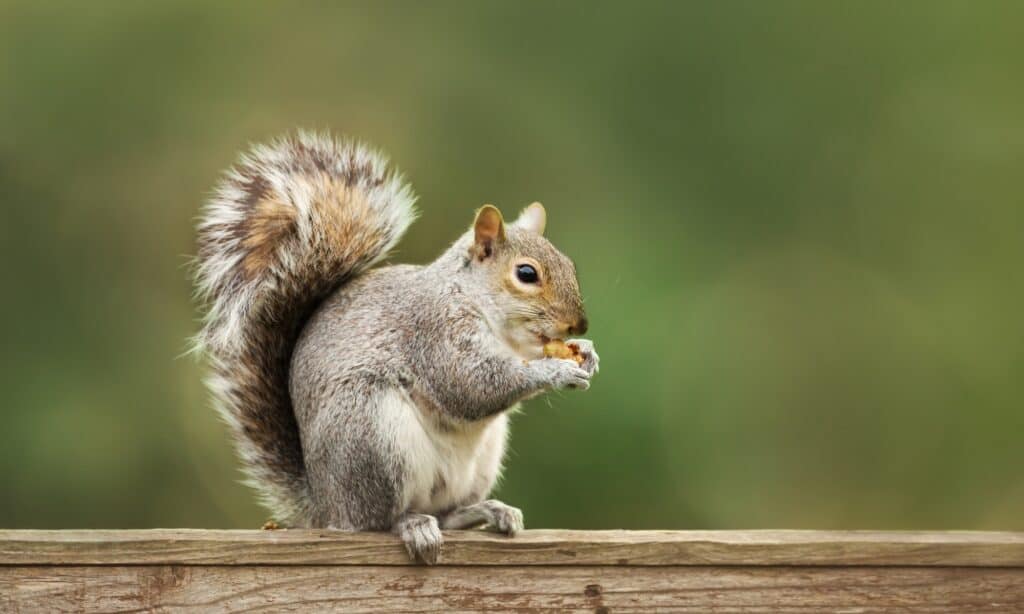
Squirrels are rodents and share all the unique characteristics.
©iStock.com/Dgwildlife
Squirrels are rodents. They are members of the Rodentia order, and they share all of the characteristics that are unique to rodents. Just like rodents, squirrels have constantly growing teeth and a primarily herbivorous diet. They also have short limbs and a long tail. Squirrels are extremely adaptable and live in a wide range of habitats across large parts of the world.
Typical Rodents?
All rodents share a unique set of characteristics that set them apart from most other animals. As squirrels are rodents, they too share these features. Most rodents have small bodies with small limbs and long tails. However, the main defining feature of rodents is their teeth. All rodents lack canine teeth (these are the sharp, pointy ones that all meat-eaters use to bite and tear their prey with). Instead of canine teeth, rodents have a large gap – also known as a diastema – between the incisors and the premolars where they should be. Rodents also have large and powerful incisor teeth which never stop growing.
As a consequence of constantly growing teeth, rodents must gnaw all the time to prevent their teeth from becoming too long for their mouths. This constant chewing (often on things they’re not supposed to) is what tends to earn them pest status. However, all rodents have self-sharpening teeth to help them with their constant chewing. This is because their teeth are made from hard enamel on the front and softer dentin on the rear. The dentin wears away quicker than the tough enamel. This creates a unique chisel-shaped tooth that always has a super-sharp edge. This sharp edge is useful for chewing the nuts, seeds, fruit, and bark that is their main diet. Like most rodents, squirrels are primarily herbivorous, although they sometimes eat insects.
Additionally, if you’ve ever looked at a squirrel and wondered why it has orange teeth, don’t worry, as they’re meant to be that color. Yes, squirrels and many other rodents actually have bright orange teeth. This is because the enamel contains iron compounds, making the teeth even stronger and more durable.
Bright Eyed and Bushy Tailed
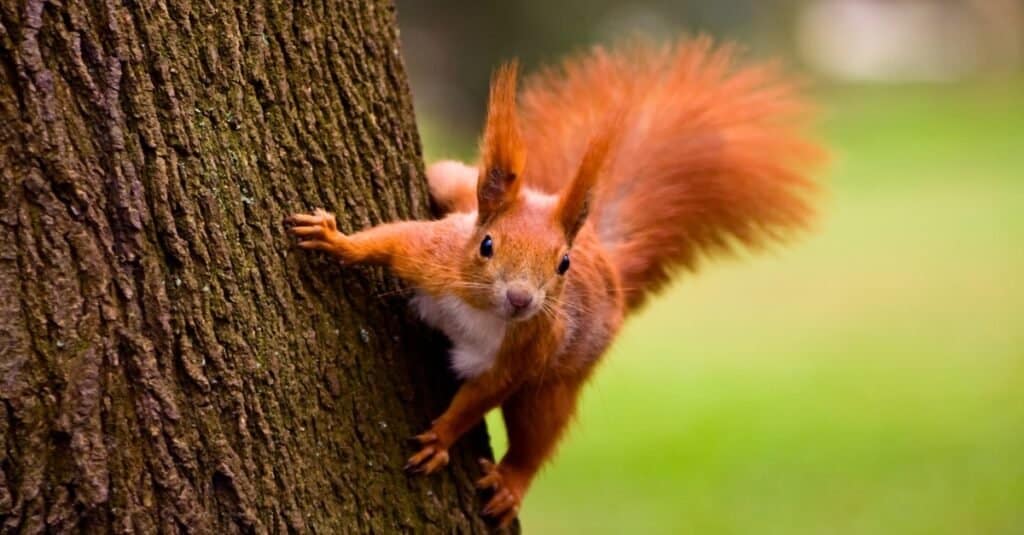
Squirrels are uniquely adapted to their lifestyle.
©seawhisper/Shutterstock.com
We already know that squirrels are active, lively little animals, but did you know just how well adapted they are to their lifestyle? For a start, squirrels have large, bright eyes, which give them excellent vision. This is particularly useful for them when scampering amongst the trees and leaping from branch to branch with the utmost confidence. Most squirrels are crepuscular, which means that they are most active during the hours of twilight. However, some are active during the day, and some flying squirrels are nocturnal.
One of the most noticeable features of squirrels is their signature bushy tail. However, it’s not just for show as it actually has a surprising number of uses. Squirrels use their tails to help them balance as they climb trees. Sometimes even the best climbers can lose their grip, but luckily for squirrels, they have a handy safety feature as their tails even act as a parachute as they fall! This is because the hairs on their tail separate so that they can catch more air and slow the squirrel down. By slowing down the fall, the squirrel is less likely to be injured and has more time to right itself ready for the landing.
Another important use of their tail is communication. Squirrels use their tails to signal to others if they have detected danger. Their tails are also an important form of communication during the breeding season. Additionally, squirrels use their tail both to keep themselves warm and to cool themselves down. When squirrels are hot, they pump more blood into their tail, where it cools quicker than elsewhere in their bodies. This is known as thermoregulation and is a pretty clever trick.
Up Next
The photo featured at the top of this post is © iStock.com/Dgwildlife
Thank you for reading! Have some feedback for us? Contact the AZ Animals editorial team.




